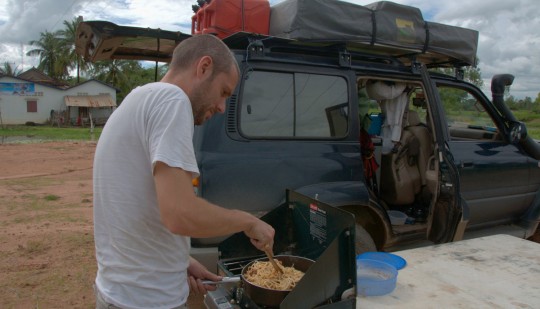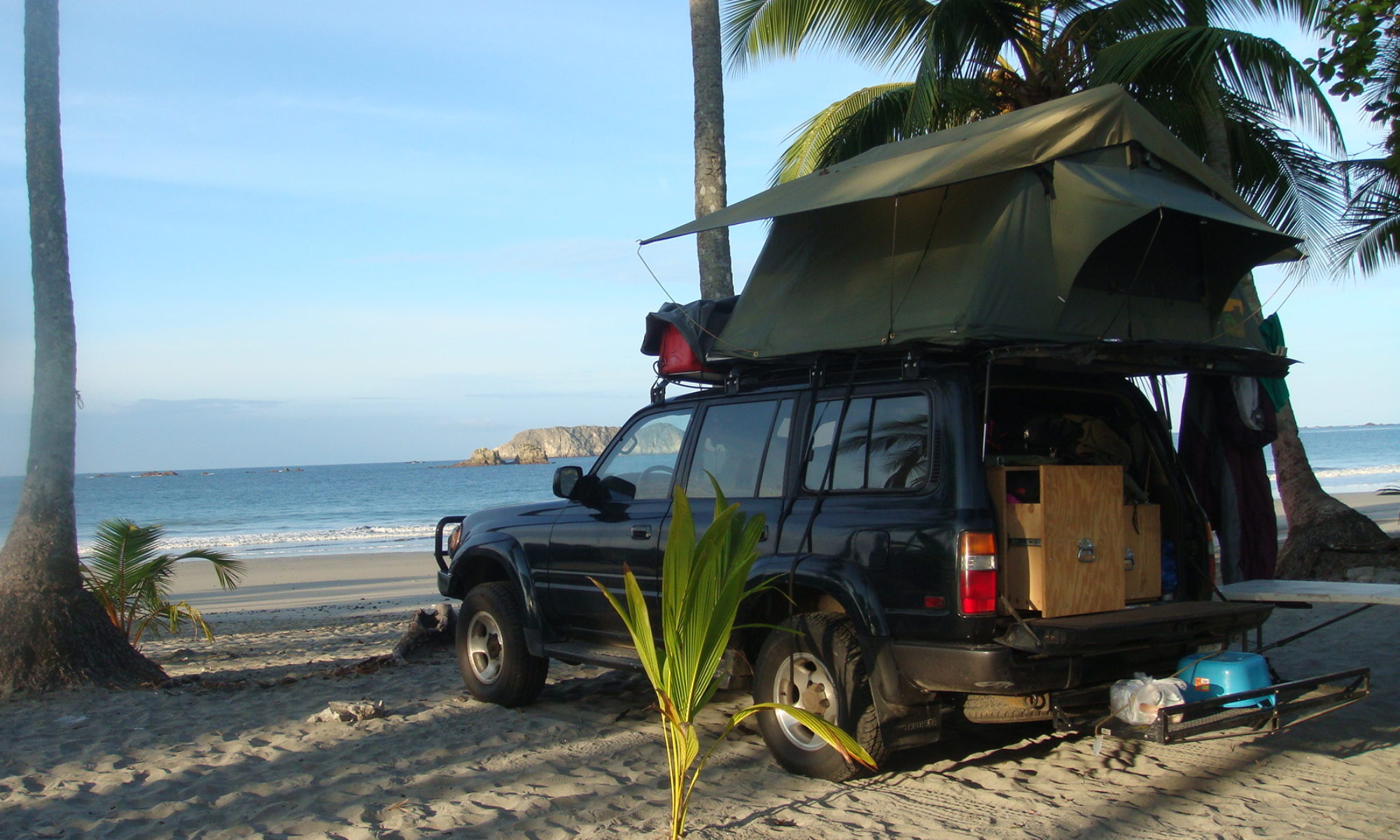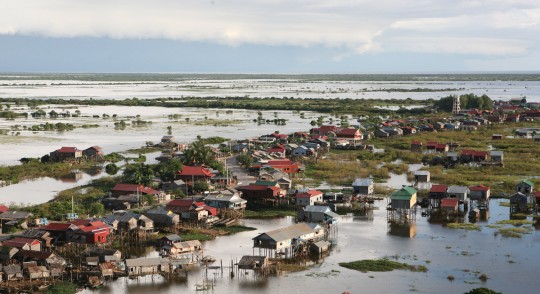
After another stop to spend the night on the beach in Cha-am, I just have another short stage of 170 miles to arrive to Bangkok. There, I pick up Vikas and we spend two nights at his parent’s house before driving east.
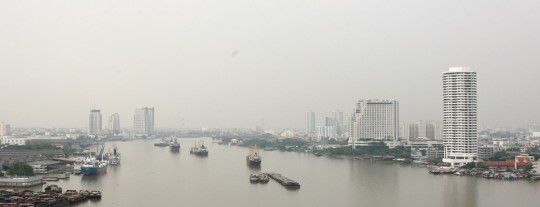
I unload some bulky items I know we will not need in our Cambodia expedition, so there’s more place in the vehicle, and I am a little bit lighter getting ready for roads which I imagine – wrongly – should be pretty bad.
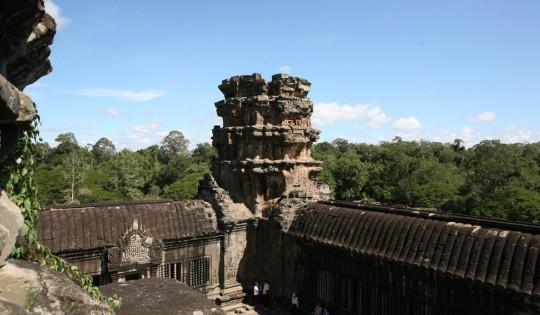
On Monday at 1 p.m., we cross the border between Thailand and Cambodia, which is a very easy operation. Very conveniently we applied online for the visa (US$ 25) and it saves us some time on the field. We still have to wait half an hour for the custom officers to finish lunch, but the process is painless.
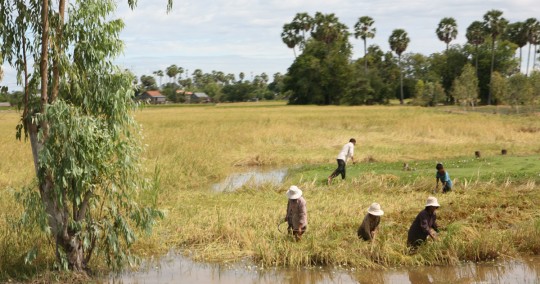
We continue our drive to the countryside where rice cultivation replaces the rubber trees plantations visible everywhere in Malaysia and in the border area in Thailand. Last time I saw these rubber trees, I was in Malawi. Most of the rubber is used to produce tires, which comes as a surprise to me since I imagined for some reason that the rubber used nowadays was completely synthetic.
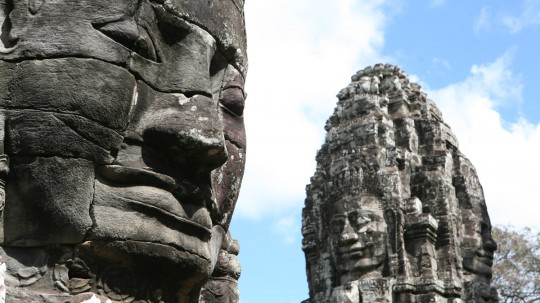
The flooded Cambodia landscape is reminiscent of Bangladesh, and here too fishing is going on everywhere in canals along rice crops. In the afternoon, we arrive in Siem Reap, the gateway to Angkor.
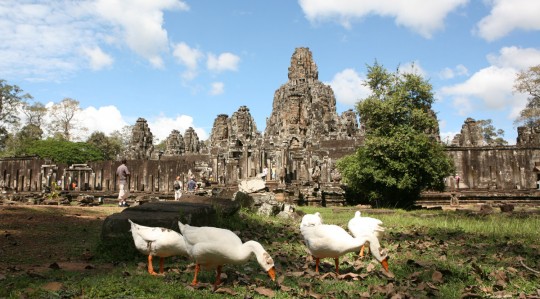
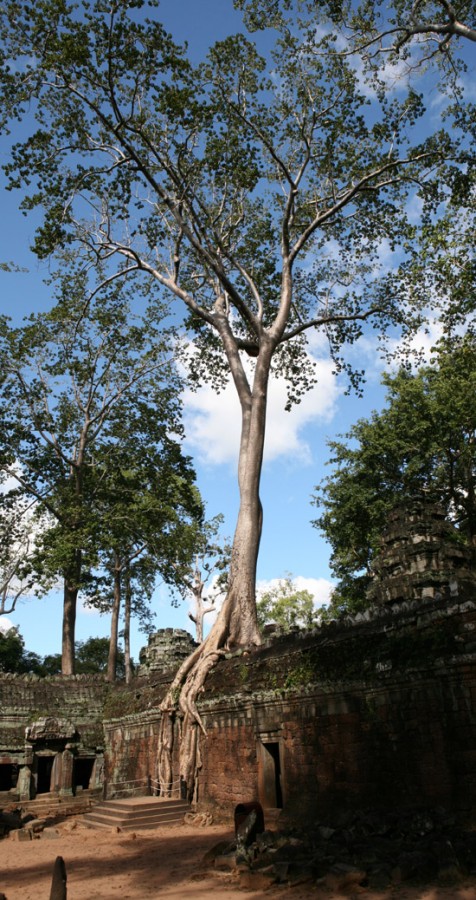
Cambodia used to be a French colony, and my compatriots re-discovered the Angkor site in the 19th century, and since then, the site is under restoration. The three decades of war did slow down the work, and there was virtually no tourism during this time. The ruins of Angkor are in the jungle and it is an outstanding place to visit. Only in Peru I saw such grandeur. Construction of the ancient Khmer empire center started in the 1100 and as much as one million people lived there at its apogee. It is a lot of people, and by comparison, the actual capital of the country has nowadays a population of only two millions. The Ta Prohm ruin there was definitely the most exciting to me. The site was swallowed by trees and the jungle, which allows the visitor to see the ruins as probably all Angkor looked like when discovered by explorers a hundred year ago.
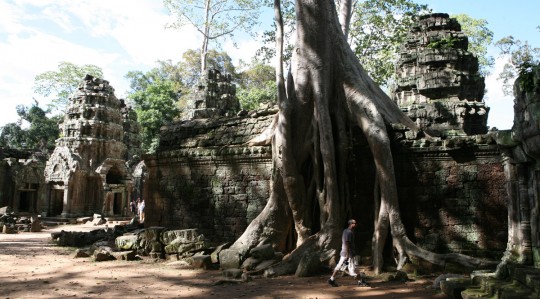
We sleep for two nights in the courtyard of a backpacker hotel, but camping is not facilitated by episodes of strong rain. We don’t have much time because Vikas just has a week of vacation, so soon enough we take the direction of Phnom Penh, the country capital. Thankfully the roads are in great shape, so we can cover a lot of ground every day. By the statistics the population of the country is pretty poor, but what you see seems to be far from it. In fact it looks like the quality of life is way better compared to a lot of country I crossed.
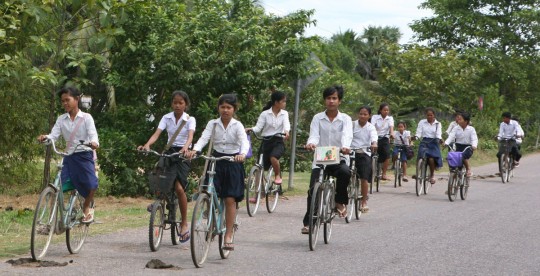
There, we go to a hotel and don’t waste time before going out again to find places to get drinks and a nice diner. The city is very charming, and as I mentioned, has an unusually low number of inhabitants. With its two million, the city is the size of Houston, USA. Lot of small buildings and French influenced restaurants. We take advantage of it, and the following day we go to visit the Tuol Sleng museum.
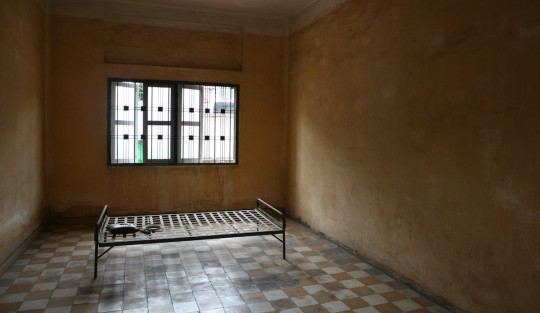
The former high school was converted to a prison by Pol-Pot security forces. In the seventies more than 17,000 people went through the detention center before ending up in the killing fields of Choeung Ek. Very depressing place where thousands were tortured by the Khmer Rouges.
Soon we are back on the road. This time we will go south toward the coast.
